The United States has had many flags over her history. The flags of European colonial rulers flew over our lands before the American Revolution. Spain, France, Holland, Sweden and England each had claims in this part of the new world.
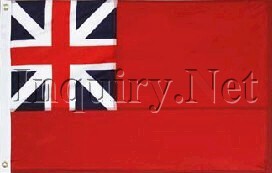
Queen Ann
The last flag waving over the original 13 colonies before the revolution was the Queen Ann flag, also known as the British Red Ensign. This flag was red with the combined crosses of St George and St Andrew in the upper left corner.
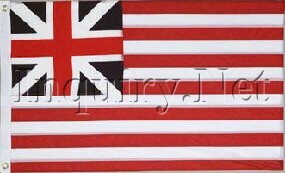
Grand Union
Early in the Revolutionary War, the grand Union flag flew over George Washington’s headquarters near Boston. It was the same flag as the Queen Ann, but with thirteen stripes, white and red, in place of the solid red field.
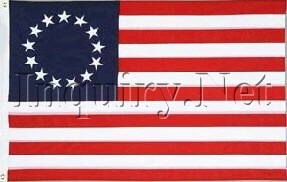
Old Glory
The first flag of the United States of America was Old Glory. The original flag was sewn by Betsy Ross in 1776, after a secret request from George Washington and other members of the Continental Congress. It became the official flag of our nation by resolution of the Continental Congress on June 14, 1777, the day we celebrate as Flag Day. Old Glory had 13 stripes, alternating red and white, and 13 stars in a field of blue, representing a "new constellation".
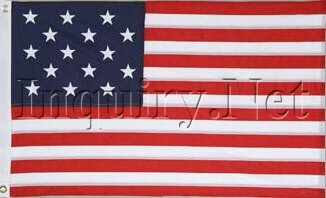
Star Spangled Banner
Our National Anthem celebrates the "Star Spangled Banner" that waved over Fort McHenry during the war of 1812. That flag had fifteen stripes and fifteen stars, representing the fifteen states, including two that had been added to the nation in 1795.
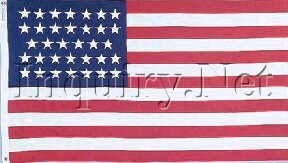
Civil War Union Flag
As more states were formed, Congress decided to return to using the original thirteen stripes, with each new state represented by adding an additional white star to the blue field, This design has continued since its adoption in 1818 through our present flag.
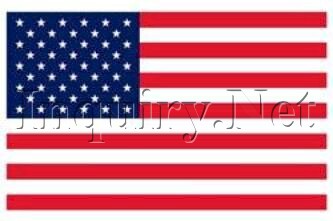
50 Star American Flag
Our flag now has fifty stars in its field of blue, one for each state in the union. The last two stars to be added represent Alaska and Hawaii, both attaining statehood in 1959.

Breaking the Flag
It is always more effective and impressive to raise a flag furled and suddenly break it out in the breeze with a tug of the halyard, than to raise it free; so every Explorer should learn how to do this.
After the 4th fold, roll it up and make two turns of rope around the bundle, and make it secure by trapping a loop under the two turns. The flag can then be hoisted to the top of the flagpole. To break the flag, pull on the end of the halyard and pull the loop free – allowing the flag to fly. Take particular care to snug the tucked-in loop so that it holds, but comes free when pulled. Nothing is more embarrassing than failure to break out a flag when the command is given. Seafarers "make colors" by hoisting the open flag when "Colors" is piped on a boatswain’s call.